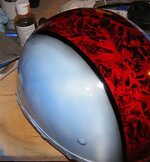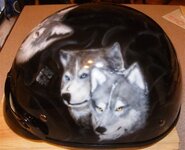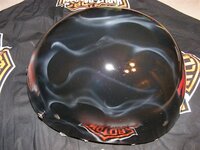ragz
Member
For any and all users of ebonite
Has anyone ever had a case of ebonite expanding or shrinking from either the work done on the piece possibly getting too hot or from a finish applied?
I had a body and cap that when I threaded was fine but a day later the cap feels sloppy. The pen went from lathe to sitting on a countertop with no use. Maybe a bad rod of ebonite??
Has anyone ever had a case of ebonite expanding or shrinking from either the work done on the piece possibly getting too hot or from a finish applied?
I had a body and cap that when I threaded was fine but a day later the cap feels sloppy. The pen went from lathe to sitting on a countertop with no use. Maybe a bad rod of ebonite??



